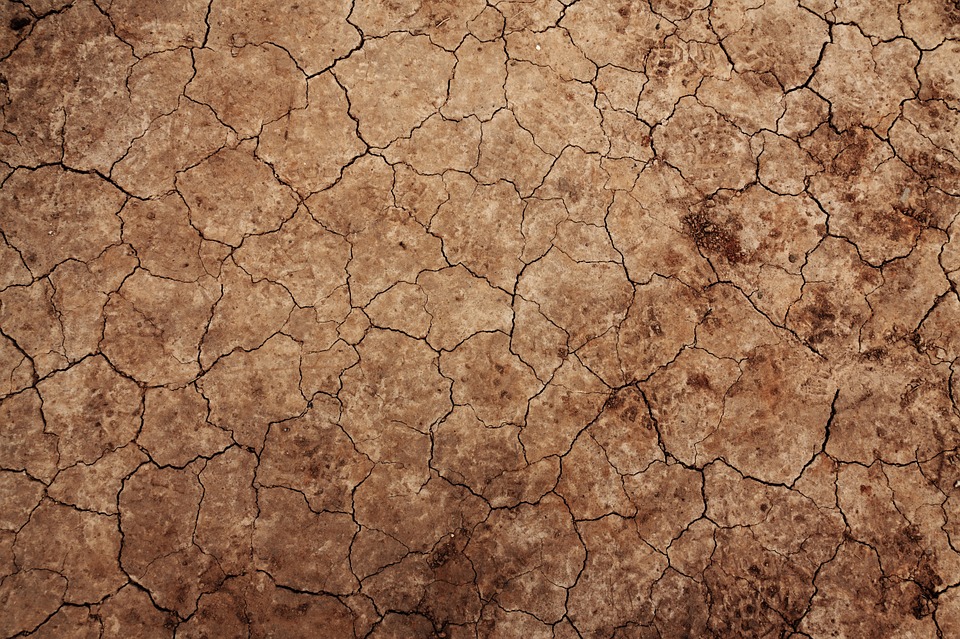Many warnings have already been issued towards the dangers of climate change, reminding everyone of its long-term consequences. Scientists have now warned of another possible factor in the warming planet that could be found at our feet.
A study by researchers from the University of Exeter found that there are up to 230 billion tons of carbon found in the soil all over the world. The study found that should global warming rise by two degrees Celsius, then these tons of carbon would be released into the atmosphere, worsening the problem of climate change. The findings were published in the journal Nature Communications.
“Our study rules out the most extreme projections -- but nonetheless suggests substantial soil carbon losses due to climate change at only 2C warming, and this doesn’t even include losses of permafrost carbon,” said Dr. Sarah Chadburn of the University of Exeter.
Carbon has been stored in the soil over time and as temperatures rise, so does the decomposition of the soil, resulting in the release of carbon into the atmosphere. The study also noted that the amount of carbon in the soil is more than twice the amount the US has produced in the last year, and more than four times the amount China has produced. Carbon soil also happens to be the biggest gray area in the fight against global warming or climate change.
The researchers made use of observational data as well as Earth System Models that could simulate the carbon and climate cycle. There are models that have predicted only 120 billion tons of carbon at 2C levels while the latest brings it down to 50 billion.
While the entire planet is at risk of suffering the effects of climate change, Antarctica would be the worst-hit of all due to the melting ice. Scientists from the National Oceanic and Atmospheric Administration and NASA have warned that the ozone hole above the icy region will remain a problem for the climate this November.
September this year already saw the yearly ozone hole above the Arctic region reach its maximum size of 9.6 million square miles. A map drafted by NASA indicated the actual scale of the ozone hole above the frozen region in October.



 NASA and Roscosmos Chiefs Meet in Florida to Discuss Moon and ISS Cooperation
NASA and Roscosmos Chiefs Meet in Florida to Discuss Moon and ISS Cooperation  Tabletop particle accelerator could transform medicine and materials science
Tabletop particle accelerator could transform medicine and materials science  What’s so special about Ukraine’s minerals? A geologist explains
What’s so special about Ukraine’s minerals? A geologist explains  As the Black Summer megafires neared, people rallied to save wildlife and domestic animals. But it came at a real cost
As the Black Summer megafires neared, people rallied to save wildlife and domestic animals. But it came at a real cost  Ancient Mars may have had a carbon cycle − a new study suggests the red planet may have once been warmer, wetter and more favorable for life
Ancient Mars may have had a carbon cycle − a new study suggests the red planet may have once been warmer, wetter and more favorable for life  Is space worth the cost? Accounting experts say its value can’t be found in spreadsheets
Is space worth the cost? Accounting experts say its value can’t be found in spreadsheets  Parasites are ecological dark matter – and they need protecting
Parasites are ecological dark matter – and they need protecting  Kennedy Sets September Deadline to Uncover Autism Causes Amid Controversy
Kennedy Sets September Deadline to Uncover Autism Causes Amid Controversy  Blue Origin’s New Glenn Achieves Breakthrough Success With First NASA Mission
Blue Origin’s New Glenn Achieves Breakthrough Success With First NASA Mission  GesiaPlatform Launches Carbon-Neutral Lifestyle App ‘Net Zero Heroes’
GesiaPlatform Launches Carbon-Neutral Lifestyle App ‘Net Zero Heroes’  The UK is surprisingly short of water – but more reservoirs aren’t the answer
The UK is surprisingly short of water – but more reservoirs aren’t the answer  CDC Vaccine Review Sparks Controversy Over Thimerosal Study Citation
CDC Vaccine Review Sparks Controversy Over Thimerosal Study Citation  Lake beds are rich environmental records — studying them reveals much about a place’s history
Lake beds are rich environmental records — studying them reveals much about a place’s history  SpaceX Starship Test Flight Reaches New Heights but Ends in Setback
SpaceX Starship Test Flight Reaches New Heights but Ends in Setback  FDA Adds Fatal Risk Warning to J&J and Legend Biotech’s Carvykti Cancer Therapy
FDA Adds Fatal Risk Warning to J&J and Legend Biotech’s Carvykti Cancer Therapy  Burkina Faso and Mali’s fabulous flora: new plant life record released
Burkina Faso and Mali’s fabulous flora: new plant life record released 





























